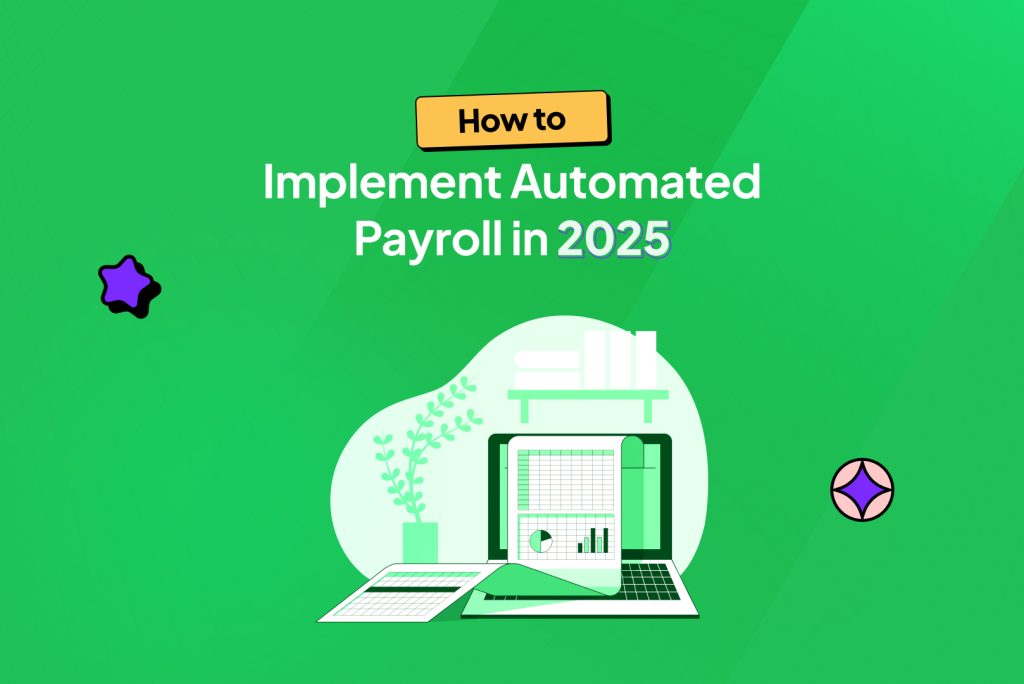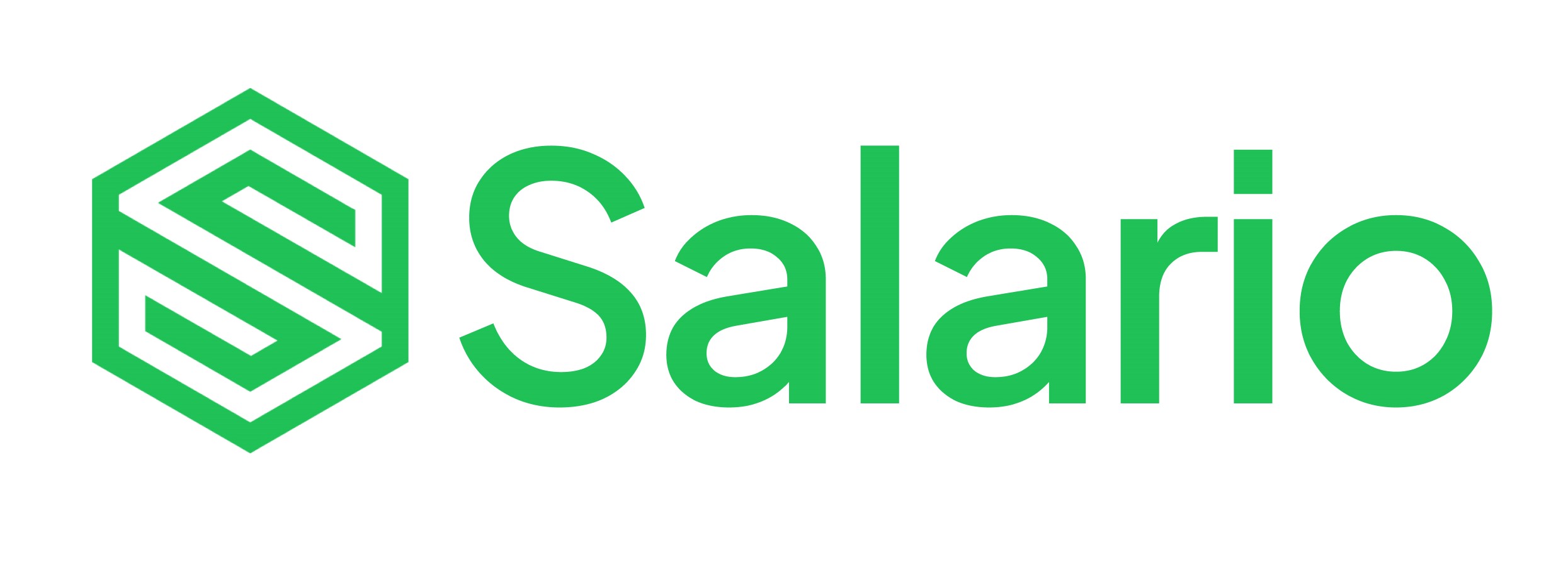
Having an automated payroll system in 2025 is no longer optional, it’s essential. Whether you manage a small startup with a handful of employees or a growing company with a complex workforce, payroll automation allows you to streamline payments, tax calculations, compliance tracking, and overall payroll management.
The real advantage of implementing automated payroll is efficiency. Instead of spending hours on manual payroll calculations, you can set up triggers, automate payments, and focus on growing your business. The right payroll software, like Salario, does the heavy lifting, ensuring you never have to worry about late payments, tax deductions, or payroll compliance again.
So, how do you transition to automated payroll in 2025? What key steps should you follow to ensure smooth implementation? Let’s break it down.
Here Are 7 Key Steps to Implement Automated Payroll in 2025
1. Assess Your Payroll Needs
Anyone can walk into a tool shop and buy a box of screwdrivers, only to realize later that none of them fit the screws they need. This is often the case for businesses that choose payroll systems without first evaluating their existing business needs.
Before selecting a payroll automation system, conduct a payroll audit. These are some key questions you should ask to properly audit your business:
- How many employees do you have?
- Do you hire full-time, contract, or freelance workers?
- What are your tax obligations?
- Do you need multi-currency or cross-border payment options?
- Do you want payroll integration with accounting and HR software?
Assessing these factors helps you choose a payroll system that fits your business needs rather than one that leaves you struggling with unnecessary complexities. We have a complete payroll audit quiz that can help you determine where you are and how urgent your payroll needs are.
2. Find the Perfect Payroll Software for Your Business

Choosing a payroll system is a long-term decision that impacts employee satisfaction, tax compliance, and financial transparency. This decision should not be taken haphazardly, rather thoughts on what problems you need to solve and potential future security should inform your decisions. If you have been able to run a proper payroll audit, making this decision will be a breeze for you. Here are a couple of functions an ideal automated payroll software should be able to do for you:
- Automate salary payments, tax deductions, and pensions
- Handle local and international payroll needs
- Generate tax-compliant payslips
- Ensure data security and prevent payroll fraud
Salario is a great choice for businesses looking for an all-in-one payroll automation system. It simplifies payroll, handles taxes, and ensures your employees get paid on time, every time.
Explore how Salario can transform your payroll process here.
3. Set Up Payroll Automation Features
Once you’ve chosen the right payroll software, customize it to suit your needs. Every business has unique payroll rules, so setting up automation correctly is crucial. A great payroll option should be able to allow you customize certain functions to meet the needs of your business. Key areas to configure include:
- Payment Schedules: Decide whether you’ll run payroll weekly, biweekly, or monthly.
- Tax Deductions: Automate tax calculations based on the latest regulatory updates.
- Benefits and Pensions: Integrate health insurance, pension funds, and other deductions.
- Time-Tracking Integration: If you pay employees based on hours worked, connect your payroll software to a time-tracking system.
By setting up these features from the start, you ensure that payroll runs smoothly and automatically without manual intervention, just occasional manual supervision.
4. Migrate Employee Data Securely
Payroll automation is only as effective as the data it processes. Migrating employee data to your new payroll system requires accuracy and security.
Ensure that you gather and verify the following information before migration:
- Employee names, addresses, and tax identification numbers
- Bank account details for direct deposit
- Salary structures, overtime rates, and bonuses
- Tax and social-security contributions
Most payroll automation platforms, including Salario, allow bulk data uploads, ensuring that migration is quick and error-free. To make these tedious task easier, Salario offers multiple options for uploading employee data, including allowing your employees fill in their data, helping you handle employee pdf data sheets and filling the data automatically, and more.
5. Test the Payroll System Before Going Live
No matter how reliable your payroll automation software is, testing is essential before fully switching over. Running a test payroll cycle helps identify potential errors and ensures your employees receive accurate payments.

Steps to test payroll automation:
- Run a mock payroll with sample employee data.
- Cross-check tax calculations and deductions for accuracy.
- Confirm that payment schedules align with your business’s payroll calendar.
- Ensure that compliance settings match regulatory requirements.
Only after successfully completing these checks should you fully transition to an automated payroll system.
6. Train Your HR Team and Employees
Adopting payroll automation isn’t just about setting up the system, it’s also about ensuring that HR teams and employees understand how to use it. There really is no point using a new payroll system if your HR team is unable to properly manage the process.
For HR Teams: Train payroll managers on using automation tools, generating reports, and troubleshooting issues. Salario provides HR managers with a special access to handle essential payroll duties as management teams within the payroll system.
For Employees: Provide access to self-service portals where employees can view their pay stubs, tax deductions, and leave balances. Salario has a dedicated app that allows employees do all of the above and more. Our app goes beyond simply receiving pay, it enables employees apply for earned wages, make daily transactions and also manage bills such as electricity and water bills at the tap of a button
A well-trained team minimizes errors and confusion, ensuring a seamless transition to automated payroll.
7. Monitor, Optimize, and Stay Compliant
Payroll regulations change frequently, and even automated payroll systems need regular monitoring to ensure compliance.
Schedule regular audits to identify discrepancies before they become major issues.
Update tax settings to reflect changes in government regulations.
Check software updates to ensure security patches are applied.
By continuously monitoring payroll performance, you avoid penalties, ensure accurate payments, and keep employee trust intact.
Why 2025 Is the Best Time to Implement Payroll Automation
The business landscape in 2025 is evolving rapidly, and payroll automation is no longer a luxury, it’s a necessity. Here’s why now is the perfect time to transition:
1. Remote Work and Cross-Border Payments Are Increasing
With more businesses hiring global talent, payroll automation ensures seamless payments across different currencies and tax jurisdictions.
2. Compliance Requirements Are Getting Stricter
Governments worldwide are tightening payroll regulations, making compliance a challenge for manual payroll systems.
3. Payroll Fraud and Cyber Threats Are on the Rise
Automated payroll systems come with advanced security measures that protect sensitive payroll data from fraud and cyberattacks.
Final Thoughts: Make Payroll Automation a Priority in 2025
Implementing automated payroll in 2025 isn’t just about convenience, it’s about improving efficiency, ensuring compliance, and giving your business the foundation it needs to scale.
From assessing your needs and selecting the right payroll software to migrating data and training your team, each step plays a crucial role in making payroll automation work for you.
With Salario, you get a secure, compliant, and efficient payroll system that eliminates payroll headaches and ensures employees always get paid accurately and on time.Visit Salario today to explore payroll automation solutions that make running payroll effortless and stress-free.
